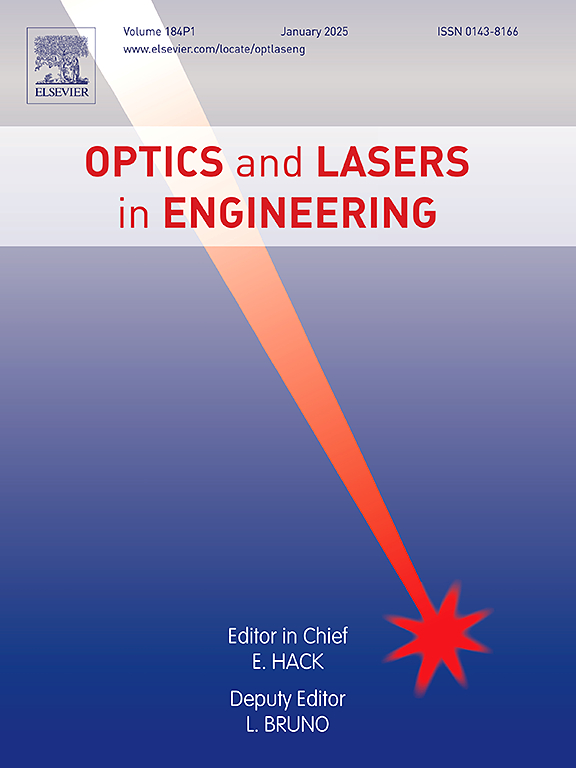Generation of multiple and ultra-high slope Fano-like resonances via MZI and cascaded fiber gratings
IF 3.7
2区 工程技术
Q2 OPTICS
引用次数: 0
Abstract
The integration of fiber Bragg gratings (FBGs) into a Mach-Zehnder interferometer (MZI) enables the realization of asymmetric Fano lineshape in an all-fiber system, attributed to the interaction between the core mode of Bragg resonance and the continuum propagating mode in MZI. In this study, we propose a simple scheme for generation and tuning of multiple Fano-like resonances in a single fiber device by incorporating cascaded fiber Bragg gratings (FBGs), acting as a multi-discrete mode resonator, into an off-axis MZI. The theoretical simulation of the fiber structure with transfer matrix theory indicates two types of Fano-like resonance with reversed lineshapes is presented, depending on the sign of the phase difference between two arms of MZI. We further verify these findings by manipulating the phase difference of the structure with an optical delay line. The experimental results demonstrate that cascading FBGs of different wavelengths enable themselves as discrete mode providers, and realize the excitation of Lorentzian, Fano, and electromagnetically induced transparency (EIT) lineshape, synchronously, within the continuous mode envelope of MZI. Additionally, cascading two identical FBGs together can form a Fabry–Pérot (FP) cavity, and cause as much as 6 discrete asymmetric Fano-like resonances with slope rate up to 4.87×104 dB/nm in an extremely narrow wavelength range of 0.2 nm. When the temperature modulation is applied on the system, the generated Fano-like resonances all undergo a periodic change, and consequently tunes Fano lineshapes with the Fano parameter q from -∞ to +∞. The achievement of multiple resonances and ultra-high slope of the Fano lineshape in a single fiber device may pave the way for high precision sensing, all-optical switching and signal processing.
通过MZI和级联光纤光栅产生多重和超高斜率的类法诺共振
将光纤Bragg光栅(FBGs)集成到Mach-Zehnder干涉仪(MZI)中,可以在全光纤系统中实现非对称的Fano线形状,这是由于Bragg共振的核心模式与MZI中的连续传播模式之间的相互作用。在这项研究中,我们提出了一个简单的方案,通过将级联光纤布拉格光栅(fbg)作为多离散模式谐振器纳入离轴MZI,在单个光纤器件中产生和调谐多个类法诺谐振。利用转移矩阵理论对光纤结构进行了理论模拟,结果表明,根据MZI两臂相位差的符号,存在两种线形相反的法诺共振。我们通过光延迟线操纵结构的相位差进一步验证了这些发现。实验结果表明,不同波长的级联fbg可以作为离散模式提供者,并在MZI的连续模式包络内同步实现洛伦兹、法诺和电磁感应透明(EIT)线形的激发。此外,将两个相同的fbg级联在一起可以形成fabry - p寄送(FP)腔,并在0.2 nm的极窄波长范围内产生多达6个离散的不对称法诺类共振,斜率高达4.87×104 dB/nm。当温度调制应用于系统时,产生的类法诺共振都经历周期性变化,并因此调整法诺线形状与法诺参数q从-∞到+∞。在单个光纤器件中实现多共振和超高斜率的法诺线形状,可能为高精度传感、全光开关和信号处理铺平道路。
本文章由计算机程序翻译,如有差异,请以英文原文为准。
求助全文
约1分钟内获得全文
求助全文
来源期刊

Optics and Lasers in Engineering
工程技术-光学
CiteScore
8.90
自引率
8.70%
发文量
384
审稿时长
42 days
期刊介绍:
Optics and Lasers in Engineering aims at providing an international forum for the interchange of information on the development of optical techniques and laser technology in engineering. Emphasis is placed on contributions targeted at the practical use of methods and devices, the development and enhancement of solutions and new theoretical concepts for experimental methods.
Optics and Lasers in Engineering reflects the main areas in which optical methods are being used and developed for an engineering environment. Manuscripts should offer clear evidence of novelty and significance. Papers focusing on parameter optimization or computational issues are not suitable. Similarly, papers focussed on an application rather than the optical method fall outside the journal''s scope. The scope of the journal is defined to include the following:
-Optical Metrology-
Optical Methods for 3D visualization and virtual engineering-
Optical Techniques for Microsystems-
Imaging, Microscopy and Adaptive Optics-
Computational Imaging-
Laser methods in manufacturing-
Integrated optical and photonic sensors-
Optics and Photonics in Life Science-
Hyperspectral and spectroscopic methods-
Infrared and Terahertz techniques
 求助内容:
求助内容: 应助结果提醒方式:
应助结果提醒方式:


